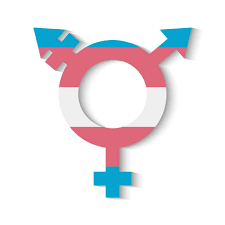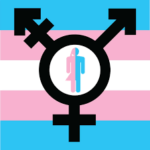Starting your gender transition can be one of the most significant and transformative journeys of your life. Whether you’re contemplating a change in your gender expression, seeking medical interventions, or simply trying to live more authentically, understanding the steps involved is crucial. Transitioning is a personal experience, and there’s no one-size-fits-all approach. In this article, we’ll explore various aspects of gender transition, from self-reflection to legal changes, to help you navigate this important time in your life.
Understanding Gender Transition: What It Means for You
Gender transition involves a process where an individual shifts their gender expression and identity to align more closely with their true self. It can include social, medical, and legal changes. Understanding what transition means for you personally is the first step. It’s important to remember that transitioning is not necessarily linear; you can take your time and adapt as you learn more about yourself and your needs.Transgender Training
Each person’s journey is unique, and what works for one individual may not be the best path for another. Some people may feel comfortable identifying as non-binary or genderqueer, while others may pursue a more binary transition. Regardless of how you define your gender, awareness and acceptance of your identity are crucial components of the transition process.
Self-Reflection: Discovering Your True Gender Identity
Self-reflection is a vital part of discovering your gender identity. Spend some time thinking about how you feel in your own skin and what aspects of your gender you wish to express. Journaling can help clarify your thoughts and feelings. Engaging with supportive friends or therapists can also provide valuable perspectives, making it easier to understand what transitioning means for you.
Additionally, exploring gender identity through literature, online forums, and personal stories can be illuminating. You might find comfort in knowing that many have walked similar paths, and their experiences can guide you. Ultimately, the goal of self-reflection is to cultivate a clearer understanding of who you are and what you need from the transition process.
Coming Out: How to Share Your Journey with Others
Coming out can be one of the most daunting parts of transitioning. It’s a deeply personal decision that involves disclosing your gender identity to friends, family, and colleagues. Begin by choosing a safe and supportive environment for these conversations. You might want to first confide in someone you trust, as this can help build your confidence and clarify your thoughts before approaching a larger audience.
When you do come out, be prepared for a variety of reactions. Some people may be supportive, while others may struggle to understand. It’s important to give them time to process their feelings and educate them if necessary. Remember, this is your journey, and you have the right to share it at your own pace.
Finding Support: Communities and Resources to Explore
Finding a supportive community can greatly enhance your transition experience. Whether online or in-person, connecting with others who share similar experiences can provide comfort, encouragement, and valuable advice. Look for local LGBTQ+ centers, support groups, or online forums where you can share your thoughts and feelings without judgment.
Resources like books, documentaries, and podcasts focused on gender identity can provide additional insights. Organizations such as PFLAG or the Trevor Project offer valuable resources and helplines for those seeking support. Remember, you’re not alone; many have walked this path before you, and their wisdom can be invaluable.
Medical Options: Hormone Therapy and Other Choices
If you’re considering medical transition, one of the significant steps may involve hormone therapy. Hormone replacement therapy (HRT) can help align your physical body with your gender identity. It’s essential to do thorough research and consult with qualified healthcare professionals who specialize in transgender health to discuss the benefits, risks, and types of hormone treatments available.
In addition to HRT, some may choose to explore surgical options. These decisions are deeply personal and should be made based on your individual needs and goals. Don’t hesitate to ask questions and seek second opinions to ensure you feel confident in your medical choices.
Legal Steps: Changing Your Name and Gender Marker
Transitioning often involves legal changes, such as updating your name and gender marker on official documents. This process varies by location, so it’s important to research the specific laws and requirements in your area. Start by gathering necessary paperwork, such as identification and any court documents that may be needed.
Changing your name and gender marker can be empowering, helping you feel more aligned with your identity in day-to-day life. It can also make interactions with institutions like banks, schools, and workplaces smoother and more affirming. Remember to update your information wherever necessary, including social security, driver’s licenses, and medical records.
Living Authentically: Embracing Your New Identity
Living authentically means embracing your true self and allowing your gender identity to shine. This journey can be liberating, but it can also come with challenges. Surround yourself with supportive friends and family who celebrate your identity. It’s essential to create a space where you can express yourself freely without fear of judgment.
As you live out your gender expression, allow yourself the grace to evolve. You might find that your understanding of your identity continues to grow and change. Embracing your new identity is an ongoing process, and it’s perfectly okay to explore different avenues of self-expression along the way.
Continuing the Journey: Long-Term Support and Growth
Transitioning doesn’t end once you’ve made significant changes; it’s an ongoing journey that requires continual support and growth. Long-term therapy can be beneficial, providing a safe space to discuss feelings and experiences as they arise. Regular check-ins with healthcare providers can help ensure your medical needs are being met.
Additionally, staying connected with the community can foster a sense of belonging and support. Engage with groups and online platforms where you can share your experiences and learn from others. The journey of self-discovery and acceptance is lifelong, but with the right support and resources, you can navigate it with confidence.
Starting your gender transition is a deeply personal process that requires introspection, courage, and support. While there may be challenges along the way, the journey towards living authentically can lead to a fulfilling and enriched life. Remember, there is no rush to complete your transition, and taking your time to understand your identity is crucial. Surround yourself with supportive communities, and don’t hesitate to seek help when needed. You are worthy of love and acceptance just as you are!


